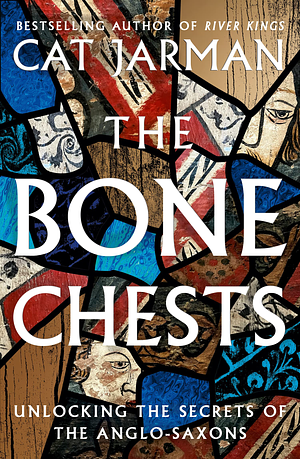
The Bone Chests: Unlocking the Secrets of the Anglo-Saxons
by Cat Jarman
Genres: History, Non-fictionPages: 356
Rating:

Synopsis:In December 1642, during the Civil War, Parliamentarian troops stormed the magnificent Winchester Cathedral, intent on destruction. Reaching the choir, its beating heart, the soldiers searched out ten beautifully decorated wooden chests resting high up on the stone screens.
Those chests contained some of England's most venerated, ancient remains: The bones of eight kings, including William Rufus and Cnut the Great - the only Scandinavian king to rule England and a North Sea Empire; three bishops; and a formidable queen, Emma of Normandy. These were the very people who witnessed and orchestrated the creation of the kingdom of Wessex in the 7th century; who lived through the creation of England as a unified country in response to the Viking threat; and who were part and parcel of the Norman conquest.
On that day, the soldiers smashed several chests to the ground, using the bones as missiles to shatter the cathedral's stained glass windows. Afterwards, the clergy scrambled to collect the scattered remains.
In 2014, the six remaining chests were reopened. A team of forensic archaeologists, using the latest scientific methods, attempted to identify the contents: They discovered an elaborate jumble of bones, including the remains of two forgotten princes. In The Bone Chests, Cat Jarman builds on this evidence to untangle the stories of the people within. It is an extraordinary and sometimes tragic tale, and a story of transformation. Why these bones? Why there? Can we ever really identify them? In a palimpsest narrative that runs through more than a millennium of British history, it tells the story of both the seekers and the sought, of those who protected the bones and those who spurned them; and of the methods used to investigate.
Cat Jarman’s The Bone Chests takes the investigation of the chests of bones held in Winchester Cathedral as a starting point to explore some of the events that began to form what we know now as England. (Blurbs and so on talk about “British” history, but it really isn’t. There’s a handful of references to Scotland and one that I can remember to Wales, and pretty much no reference to Ireland at all.) Jarman discusses the figures that may now lie splintered and scattered in the bone chests, the kings, queens and bishops that shaped what we think of as the Anglo-Saxon period.
I had been hoping, I’ll admit, for a lot more discussion of the analysis of the actual bones. But that’s relegated to little slices in between the overall narrative of “this is how England was formed, through this king and that king and sometimes a queen or two”. That’s something that I’ve read elsewhere — sometimes with slightly different details, it’s true, but in general, a history I was fairly aware of already. But a focus on the bone chests and the process of sorting through them, trying to identify who is there and what we can find out about them — that would’ve been really interesting.
So it was okay for what it was, and it’s certainly very readable, but I was hoping for slightly more focus on the promise of the title.
Rating: 3/5

I recently heard this author on a podcast — unfortunately, I can’t remember which because I’m subscribed to a ridiculous amount of history podcasts — and was definitely intrigued in her two books.
I liked River Kings! I reviewed it a while ago. I feel like that one was maybe a bit more effective in structure.